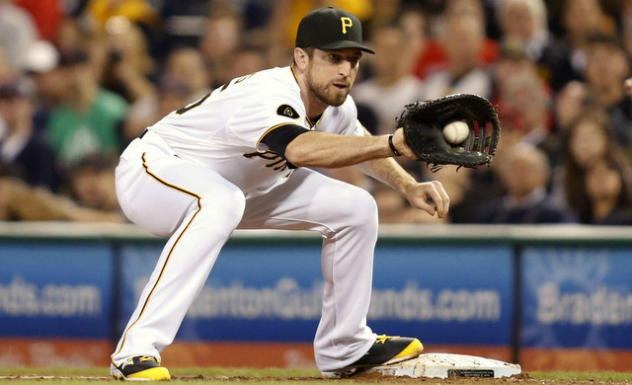 Ike Davis is the latest Dodgers NRI. (USATSI)
Ike Davis is the latest Dodgers NRI. (USATSI)
It seems like it happens almost every winter. This time around, it just happened a little bit later. The Dodgers go shopping and sign a couple of scrappy veteran players to come in and join what is projected to be an otherwise crowded spring camp.
Ned Colletti was notorious for this. The winter of 2010-11 comes to mind in particular, when the former GM went on a spree in an attempt to re-invent the relief corps, signing a group of veterans that were either unrecognized or weary from many years of service. A few of the players in the haul included Matt Guerrier, Merkin Valdez, Roman Colon, Ron Mahay, Jon Huber, Oscar Villarreal and Mike MacDougal. Although Guerrier and MacDougal eventually earned spots on the 25-man roster, most were non-roster invitees who persevered through spring training only to be sent packing upon the arrival of Opening Day.
Assembling the 2014 bullpen was one of the chief factors in Colletti’s demise as general manager. Overall, everyone not named Kenley Jansen, Chris Withrow or J.P. Howell performed horribly. The Dodgers paid former closers Brian Wilson $10 million, Chris Perez $2.3 million and Brandon League $8.5 million. The team’s $30-plus million bullpen contained several high profile names, but significantly less talent than there should have been at that price.
While acquiring a few veteran players for minimal dollars who are willing to teach and share experiences is always beneficial, spending lavishly on a laundry list of high-profile, prominent headliners past their primes often seems to be detrimental in the end. Not long after joining the organization as new president of baseball operations, Andrew Friedman quickly kicked Wilson and League to the curb, showing that he was willing to sacrifice significant amounts of money to improve the 40-man roster any way possible.
Still, from a players’ perspective, for any of the dozens of veteran non-roster invitees every spring, the goal is simple: make a club out of spring training, and take it from there. There are no guarantees for the future, just hope for another chance in the big leagues. One day at a time.
Getting a feel for assembling a roster from the Dodgers’ perspective, Friedman had a relatively large NRI crew join the club before the onset of 2015 spring training. Fans often wondered if Colletti, now a senior advsior to team president Stan Kasten, played a role in filling out the roster with his antiquated beliefs and philosophies. The 2015 NRI crew included David Aardsma, Mike Adams, Ryan Buchter, Chad Gaudin, David Huff, Ben Rowen, Sergio Santos and Buck Britton. Huff and Santos were able to contribute in minor capacities, while the others migrated away from Los Angeles and either retired or pursued other opportunities.
Although it didn’t appear overly appealing at the moment, Friedman’s management team, this time with a bit more experience under its belt, made another handful of veteran signings and extended a few non-roster invites last winter. Among this group were Joe Blanton, Louis Coleman, Jamey Wright, Elian Herrera and Charlie Culberson. Quite a few fans initially rolled their eyes over the signings, but Blanton and Coleman proved to be extremely critical to the success of the 2016 bullpen. And we all will remember for quite some time what Culberson did in the final moments of the 2016 regular season.
This year’s crop includes Brandon Morrow, Fabio Castillo, Bobby Wilson and Ike Davis, just to name a few. It goes without saying that the true value of some of these players stretches well beyond the numbers. They have an opportunity to exhibit professionalism, share real game experiences, offer advice on workout routines, while critiquing hitting and pitching mechanics — things that the youngsters in the organization need in order to develop their own personal acumens. The inclusion of these veterans also instills a heavier sense of competition for the players who are pretty much viewed as locks, the whole way down to the projected starters at the Triple-A level. Their presence also provides a double and triple-deep insurance policy of sorts, just in case some type of freak injury epidemic somehow spreads its way through the camp at Camelback Ranch.
In the end, sometimes a bit of pocket change spent on contracts should take a backseat to the valuable experience that these veterans possess, and most importantly, the desire and willingness they have to share with others on the squad.
And it does provide perhaps that one final chance for a player to live out his dream in the big leagues — at least for one more day.
Advertisements Share this:





